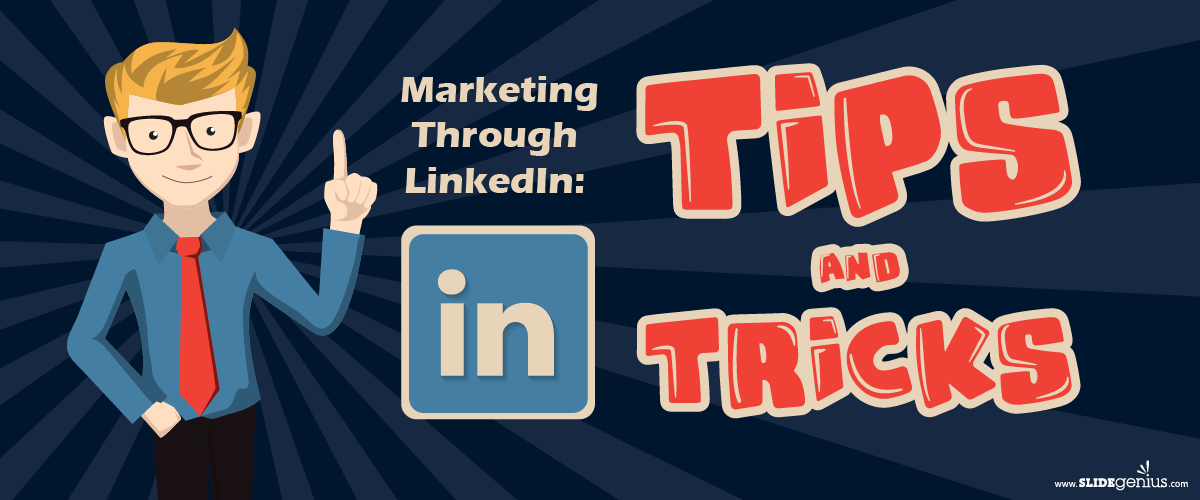
LinkedIn has become an indispensable tool for professionals and businesses alike. Whether you’re looking to network, promote your brand, or generate leads, marketing through LinkedIn offers unique opportunities to connect with decision-makers and grow your business. Here are some tips and tricks to help you make the most of LinkedIn’s marketing potential.
1. Optimize Your LinkedIn Profile
Your LinkedIn profile is often the first impression you make on potential clients, partners, or employers. Ensuring your profile is professional, complete, and optimized for LinkedIn’s search algorithm is crucial for effective marketing.Why It’s Important:
- Builds Credibility: A well-optimized profile establishes you as a credible and trustworthy professional or brand.
- Improves Visibility: Optimizing your profile increases the likelihood of being found by people searching for your expertise or services.
How to Do It:
- Use a professional profile picture and a custom banner that reflects your brand.
- Optimize your headline with keywords related to your industry or services, and fill out the summary section with a concise description of what you offer.
2. Leverage LinkedIn Groups
LinkedIn Groups provide an opportunity to engage with professionals in your industry, share knowledge, and demonstrate your expertise. Participating in groups can help you build relationships, share valuable content, and promote your services in a less promotional and more organic way.Why It’s Important:
- Increases Engagement: Active participation in groups helps you connect with potential clients or partners.
- Showcases Expertise: Sharing your knowledge and insights positions you as an authority in your field.
How to Do It:
- Join groups relevant to your industry and participate in discussions by answering questions, sharing articles, or offering advice.
- Avoid overtly promotional content—focus on adding value to the conversation and building relationships.
3. Use LinkedIn Ads
LinkedIn Ads allow you to reach a highly targeted audience based on job title, industry, company size, and other professional criteria. This makes LinkedIn Ads an effective tool for B2B marketing, lead generation, and brand awareness.Why It’s Important:
- Targets Decision-Makers: LinkedIn’s ad platform allows you to reach key decision-makers in specific industries or companies.
- Increases Lead Generation: LinkedIn Ads can drive high-quality leads to your website, product, or services.
How to Do It:
- Use Sponsored Content to promote blog posts, whitepapers, or webinars to engage your target audience.
- Create Sponsored InMail campaigns to send personalized messages directly to prospects’ LinkedIn inboxes.
4. Share High-Quality Content
Consistently sharing high-quality, relevant content is one of the most effective ways to engage your LinkedIn audience and establish your brand as a thought leader. Posting insightful articles, industry news, and company updates keeps your network engaged and positions you as a go-to resource.Why It’s Important:
- Builds Authority: Regularly sharing valuable content helps establish your brand’s authority in your industry.
- Engages Your Audience: High-quality content encourages likes, comments, and shares, increasing your reach and visibility.
How to Do It:
- Post industry-relevant articles, how-to guides, and thought leadership pieces regularly.
- Use LinkedIn’s Publishing Platform to write longer articles or blog posts directly on LinkedIn, showcasing your expertise to a broader audience.
5. Network with Decision-Makers
LinkedIn’s advanced search filters allow you to find and connect with decision-makers at specific companies, industries, or locations. Building relationships with these individuals can open doors to new business opportunities.Why It’s Important:
- Drives Business Opportunities: Connecting with decision-makers increases your chances of securing partnerships, clients, or job offers.
- Expands Your Network: The more relevant connections you make, the more opportunities you’ll have to grow your network and business.
How to Do It:
- Use LinkedIn’s advanced search to filter for professionals by job title, company, or industry.
- Send personalized connection requests and follow up with a message introducing yourself and explaining how you can help.
6. Post Consistently
Consistency is key when marketing on LinkedIn. Posting regularly keeps you top of mind with your connections and increases the chances that your content will be seen by more people.Why It’s Important:
- Builds Visibility: Regular posting ensures that your profile and content remain visible in your connections’ feeds.
- Increases Engagement: The more often you post, the more opportunities you have to engage with your audience and grow your influence.
How to Do It:
- Aim to post at least once or twice a week, sharing a mix of content such as articles, videos, and company updates.
- Use LinkedIn’s Analytics to track which posts perform best and adjust your strategy accordingly.
Final Thoughts
LinkedIn is a powerful platform for building professional relationships, promoting your brand, and generating leads. By optimizing your profile, sharing high-quality content, and engaging with your network through groups and ads, you can leverage LinkedIn’s full potential to enhance your marketing strategy. Consistency and authenticity are key—focus on adding value to your network, and the results will follow.
